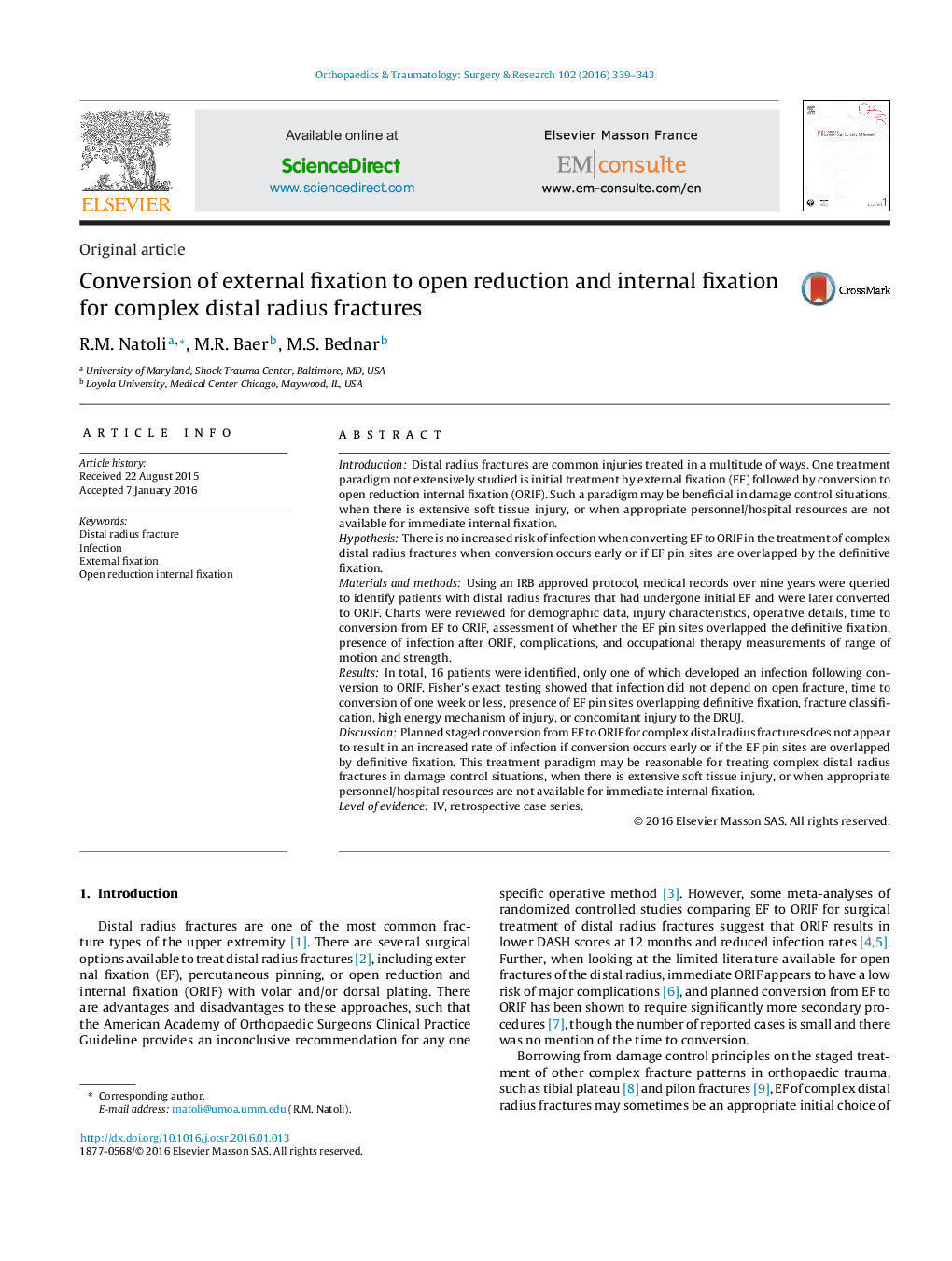| کد مقاله | کد نشریه | سال انتشار | مقاله انگلیسی | نسخه تمام متن |
|---|---|---|---|---|
| 4080736 | 1267565 | 2016 | 5 صفحه PDF | دانلود رایگان |
IntroductionDistal radius fractures are common injuries treated in a multitude of ways. One treatment paradigm not extensively studied is initial treatment by external fixation (EF) followed by conversion to open reduction internal fixation (ORIF). Such a paradigm may be beneficial in damage control situations, when there is extensive soft tissue injury, or when appropriate personnel/hospital resources are not available for immediate internal fixation.HypothesisThere is no increased risk of infection when converting EF to ORIF in the treatment of complex distal radius fractures when conversion occurs early or if EF pin sites are overlapped by the definitive fixation.Materials and methodsUsing an IRB approved protocol, medical records over nine years were queried to identify patients with distal radius fractures that had undergone initial EF and were later converted to ORIF. Charts were reviewed for demographic data, injury characteristics, operative details, time to conversion from EF to ORIF, assessment of whether the EF pin sites overlapped the definitive fixation, presence of infection after ORIF, complications, and occupational therapy measurements of range of motion and strength.ResultsIn total, 16 patients were identified, only one of which developed an infection following conversion to ORIF. Fisher's exact testing showed that infection did not depend on open fracture, time to conversion of one week or less, presence of EF pin sites overlapping definitive fixation, fracture classification, high energy mechanism of injury, or concomitant injury to the DRUJ.DiscussionPlanned staged conversion from EF to ORIF for complex distal radius fractures does not appear to result in an increased rate of infection if conversion occurs early or if the EF pin sites are overlapped by definitive fixation. This treatment paradigm may be reasonable for treating complex distal radius fractures in damage control situations, when there is extensive soft tissue injury, or when appropriate personnel/hospital resources are not available for immediate internal fixation.Level of evidenceIV, retrospective case series.
Journal: Orthopaedics & Traumatology: Surgery & Research - Volume 102, Issue 3, May 2016, Pages 339–343
